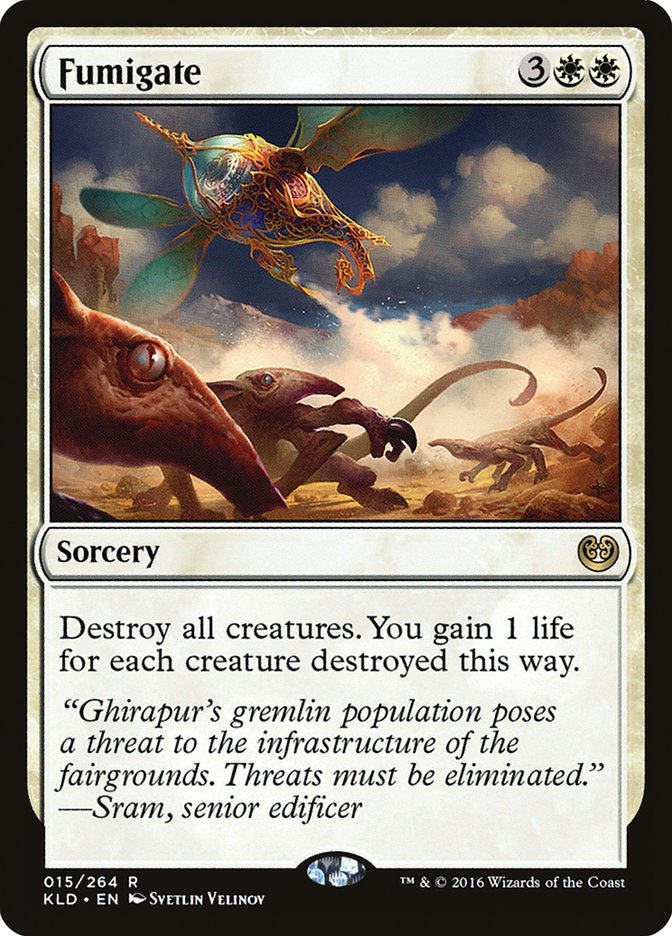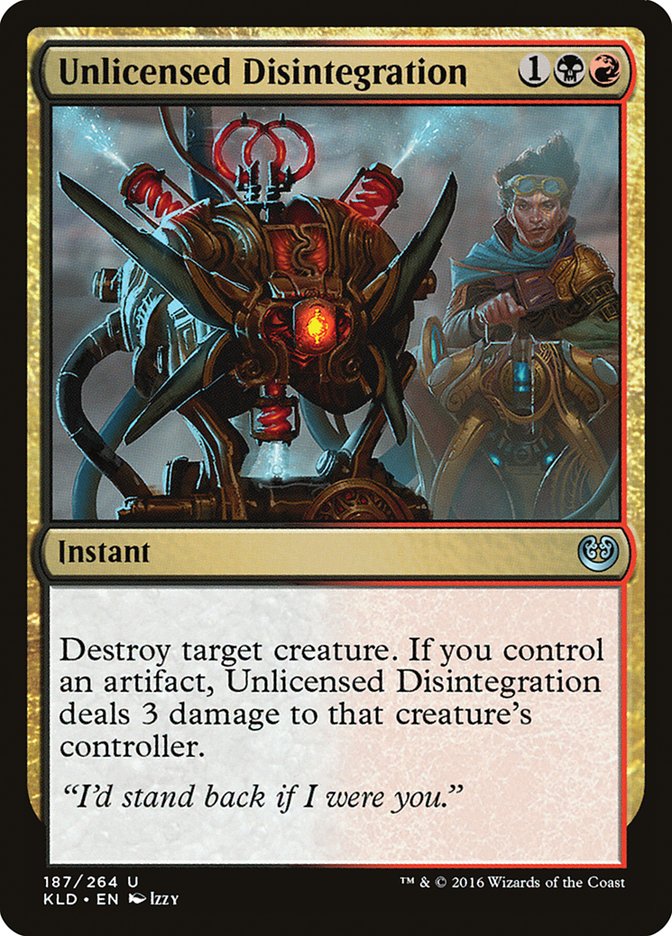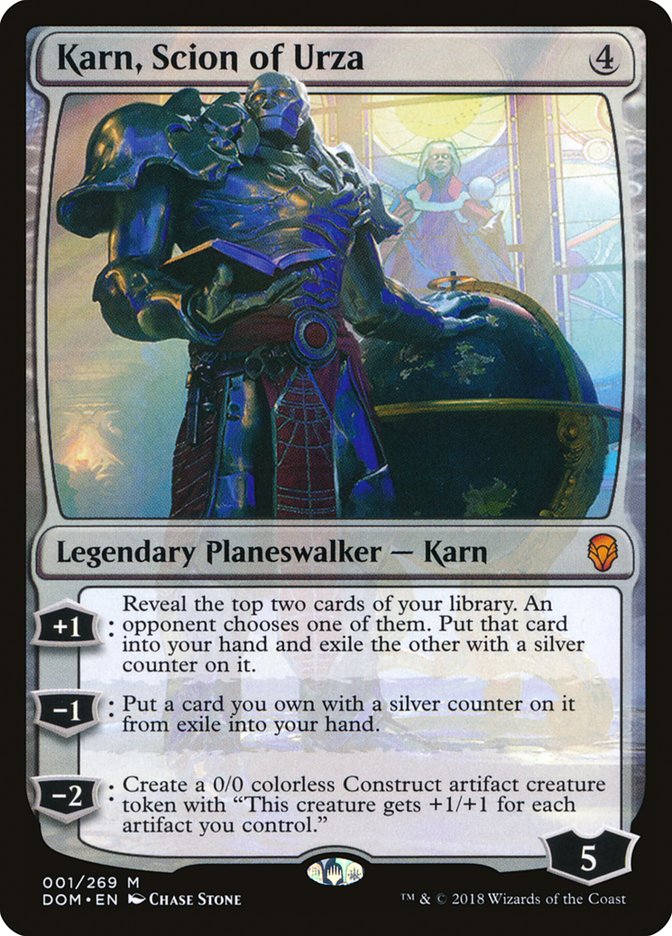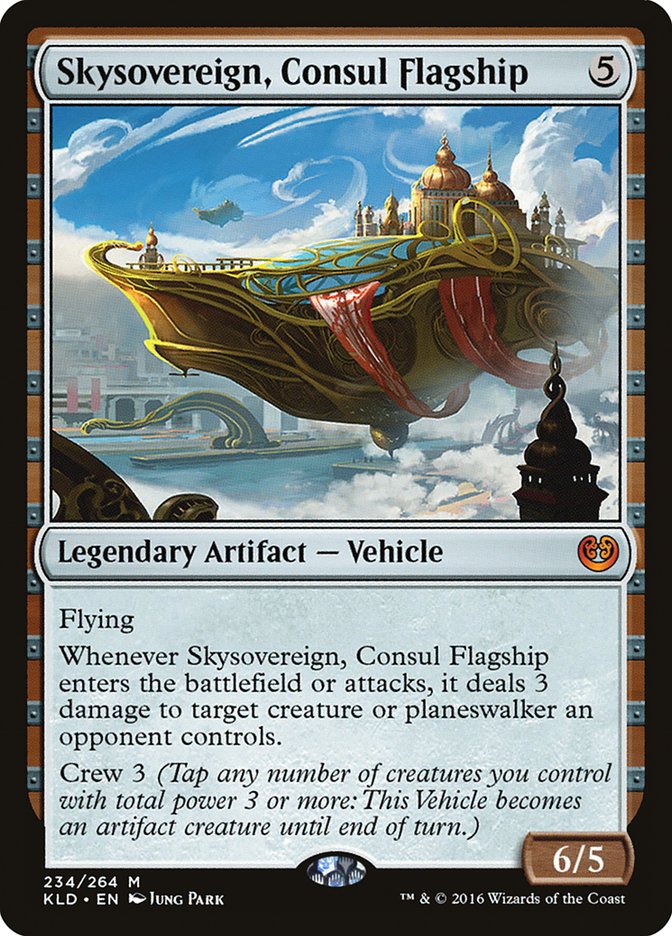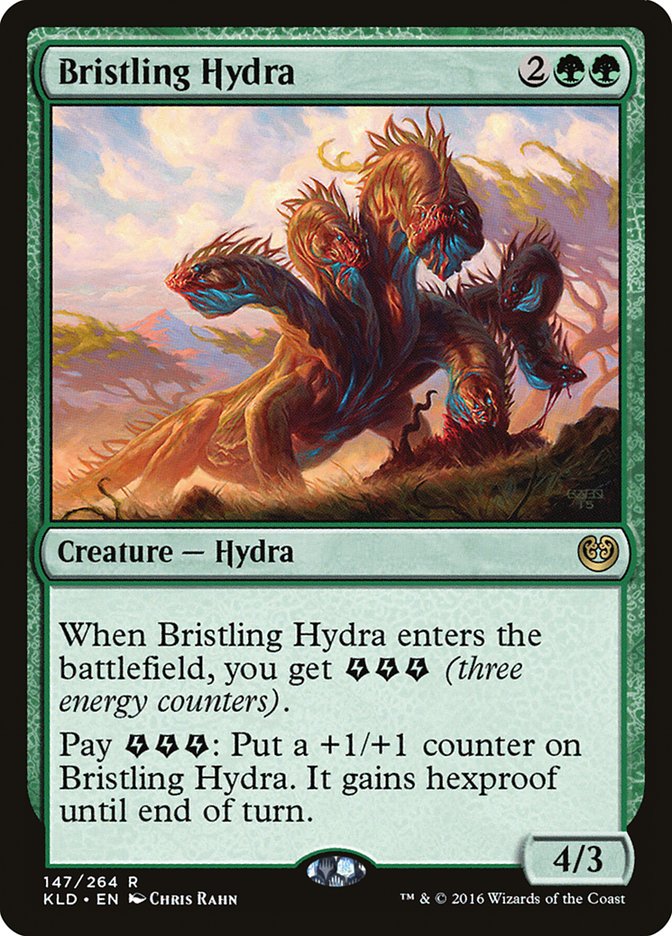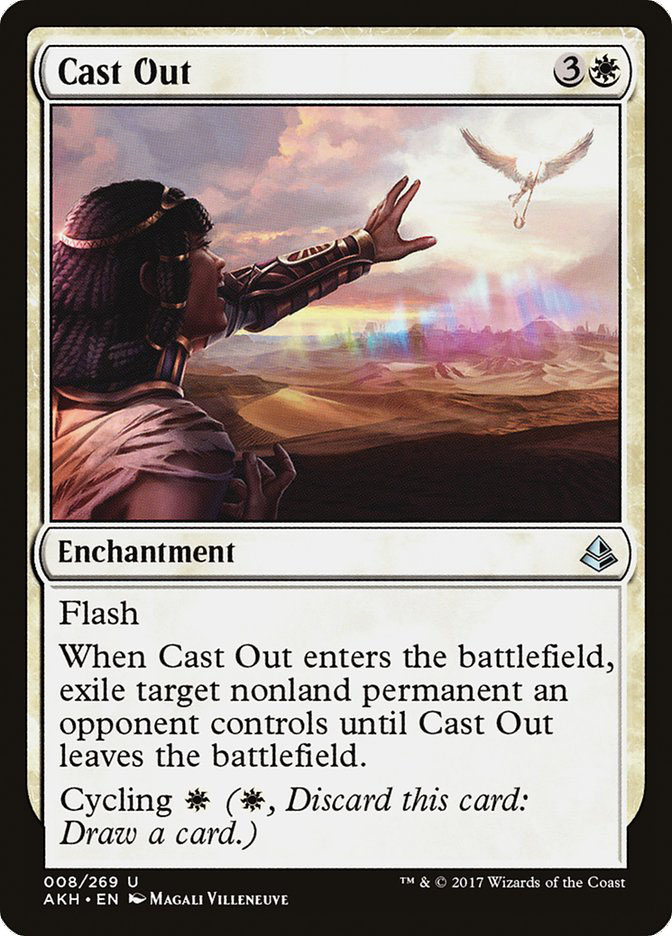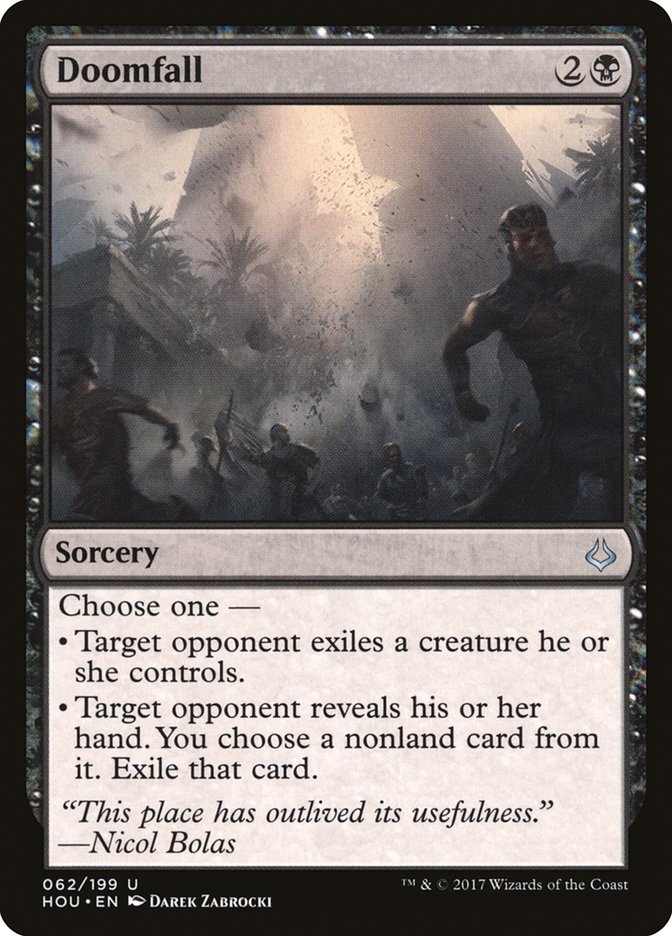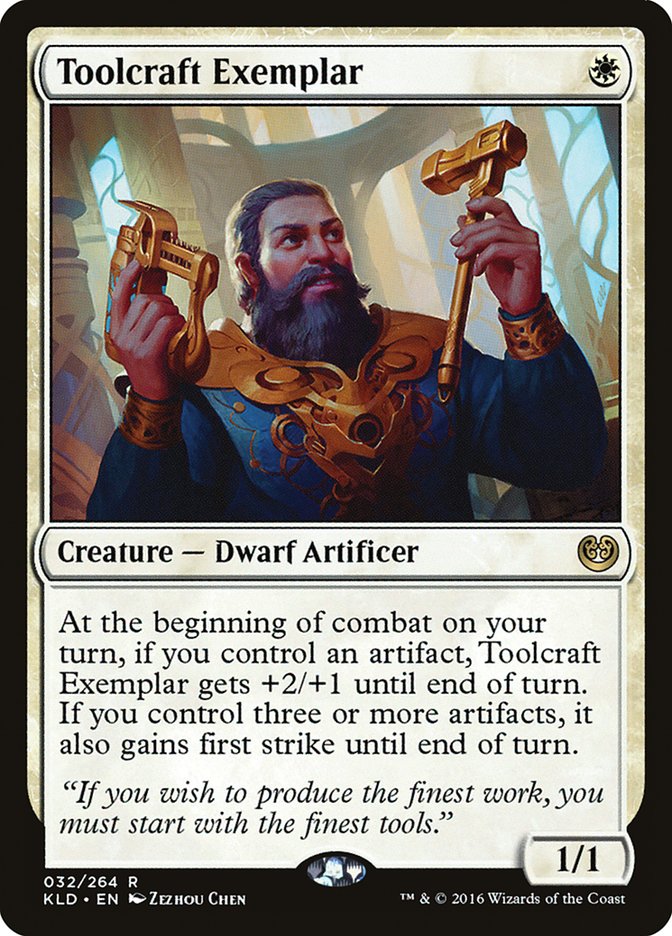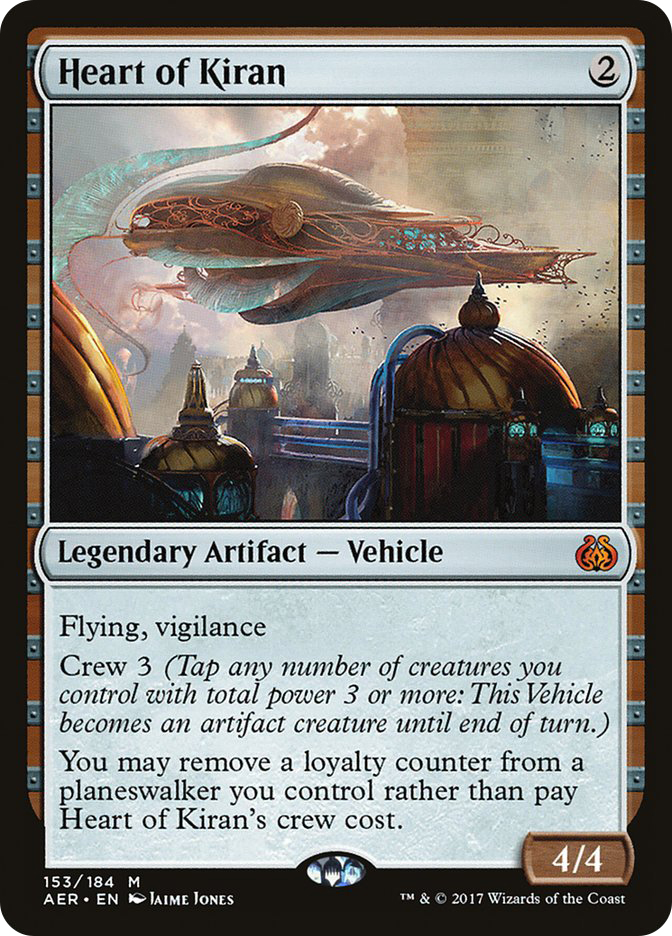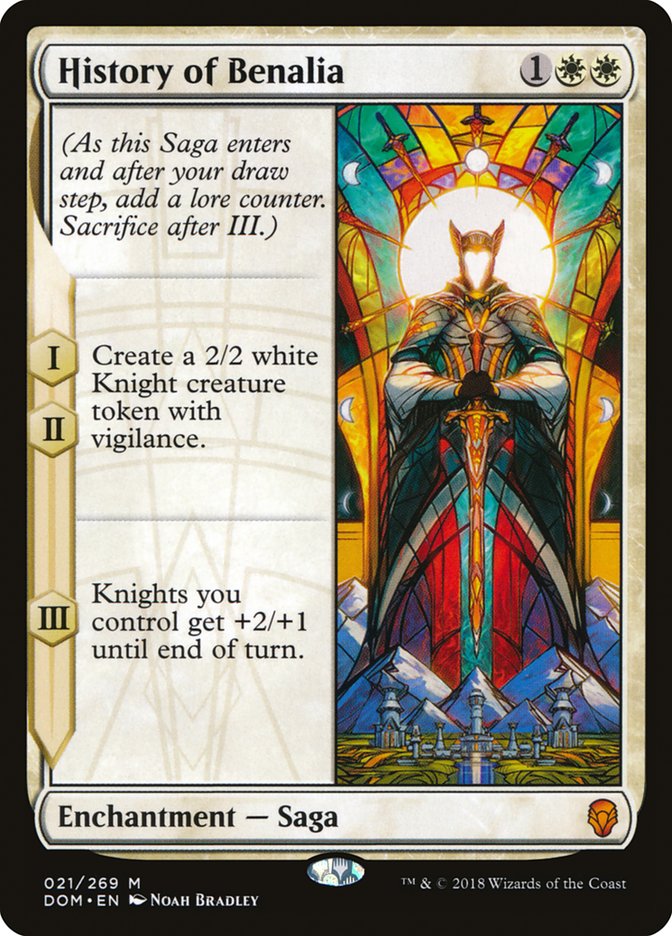When figuring out which deck to attack a Standard format with, it’s not
enough to just dismiss failed efforts with comments along the lines of
“this deck isn’t playable as it can never beat R/B Aggro,” promptly moving
on to the next deck to try. Instead you need to understand why you’re
losing so much to one of the top decks. Understanding the theory behind
this failure will give you more of a chance at tuning your deck to fight
the newly-understood problem, will prevent you from repeating the same
deckbuilding mistakes, and further will allow you to figure out the axes
you need to attack on to defeat the top decks by circumventing the stifling
effect they will naturally have on the metagame.
For any Standard format, there will always be rules of engagement that
restrict what you should be doing and it’s your job to figure out what
these rules are and how to follow them. This is no easy feat as these will
shift and change as players respond to them. In the wake of both the
results of GP Birmingham and last weekend’s online PTQ there are three
simple truths you need to be aware of as you choose your Standard deck for
upcoming tournaments.
Don’t Go Wide
The most obvious and least interesting of the three truths: I’m sure we’re
all fed up by now of reading our twentieth article about how X/1s are no
longer playable because of Goblin Chainwhirler. Considering that no one has
cast a Legion’s Landing against me in a couple weeks, people have clearly
gotten the memo.
The thing is, it actually runs a little bit deeper than that. The format as
a whole preys on people who want to go wide. This is partially because
going wide typically involves playing the sort of small creatures that get
eaten up by Goblin Chainwhirler and Walking Ballista, but also less
obviously because any attempts to insulate yourself from those cards (say,
via trying to stick a Benalish Marshal) just runs headlong into the
Fumigates that are seeing widespread play both in maindecks and sideboards
of the top decks. Note the almost overnight disappearance of Shanna,
Sisay’s Legacy, a card that shone early on in the format (winning the very
first PTQ of Dominaria Standard), but that by definition has to
exist in decks that want to go wide, something the format just doesn’t
allow at present.
Be Prepared for the Combination of Unlicensed Disintegration and
Planeswalkers
Remember Mardu Vehicles in its heyday?
There are many reasons that deck had an oppressive effect on the format it
was in, but these two cards were the biggest reasons. Both cards were
individually stifling. Unlicensed Disintegration actively punishes you for
daring to cast midrange creatures, especially ones that don’t immediately
generate value, whilst Gideon punished decks that were trying to sit behind
answers instead of generating a battlefield presence.
The problem with fighting this duo was they demanded such different things
from their opponents. The best way to deal with planeswalkers is with
creatures of your own as that way you don’t end up too far down on tempo or
cards in the process of answering that threat, but the best way to ignore
Unlicensed Disintegration is to move away from creatures that just sit on
the battlefield as a big ol’ pile of stats.
I brought up that example because, for the time being, it seems like we’re
living in that world again. In truth, R/B Aggro has been playing the team
of Disintegration and Chandra for several weeks now, but it’s never looked
as much like the second (or, by now, fourth? fifth?) coming of Mardu
Vehicles as these latest post-Dominaria versions of R/B Aggro do.
So, if history is repeating itself, what tools did we have back then?
Skysovereign, Consul Flagship was a card I always loved against Mardu
Vehicles for its ability to proactively take down planeswalkers. It seems
bad against Abrade, but in practice if you build your deck right, the R/B
Aggro player will often have to use their Abrades up before the Skyboat
hits the battlefield. And being a vehicle, it naturally plays nicely
against expensive removal spells like Unlicensed Disintegration as there’s
no requirement to crew it in the face of open mana. Meanwhile, there’s a
requirement for your opponent to hold on to their Disintegration for as
long as the Skyboat stares across the battlefield at them. Glorybringer
comes with the condition that you need to make sure your opponent doesn’t
have a Heart of Kiran sitting on the battlefield, but provided you keep
those in check, it’s excellent at tackling down freshly cast planeswalkers
before your opponent can untap with Unlicensed Disintegration mana now
open.
Bristling Hydra was a fine though awkward one against Mardu Vehicles, as
whilst it shrugged off Disintegration, it struggled to get past the stream
of Knight Allies that Gideon would bring to the table, but it lines up much
better against Chandra and Karn. Chandra can’t Flame Slash the Hydra whilst
Karn can’t make tokens in the face of it indefinitely in the way that
Gideon could. My suspicion is that Bristling Hydra is currently very
underplayed considering all of this.
Of course, instead of finding threats that line up well against this deck
on a strategic level, there’s a much more extreme approach to beating
Unlicensed Disintegration…
Don’t Fold to Creatureless Control
Leo Lahonen tore (if that’s really the appropriate word to describe winning
with a deck that mostly plans to deck its opponents) through GP Birmingham
with a creatureless version of U/W Control, inspired by a list advocated by
The GAM Podcast’s Bryan Gottlieb and a concept explored by Sam Black.
Planeswalkers (5)
Lands (27)
Spells (28)

It makes perfect sense. If you expect your opponents to be packing four
copies of Unlicensed Disintegration, then suddenly Torrential Gearhulk
becomes a liability more than anything else, giving your opponents targets
for that punishing removal spell.
Control is going to remain a key part of this format for its duration —
the tools available now are just so good that it’s hard to imagine it not
being around — and for as long as Unlicensed Disintegration is one of the
cards that defines how you approach the format, I suspect that the correct
way to build a U/W Control deck will involve leaving the Torrential
Gearhulks at home.
What does the existence of these creatureless control decks mean for your
own deckbuilding? For starters, you should try to limit how much removal
you play that exclusively deals with creatures. You’ll still need a certain
amount of removal spells in whatever deck you’re playing to not just die to
your opponent’s turn 2 Heart of Kiran, but too much of that stuff will have
you leaning entirely on the sideboard games to possibly beat your control
opponents.
Alternatively, find removal spells that have actual text on them against
your Gearhulk-less control opponents. Cast Out, Vraska’s Contempt, and
Never are all obvious ones, killing opposing creatures from midrange and
aggro decks but not being blank against most of the control decks you face
due to a need to remove Teferi, Hero of Dominaria or the ability of Cast
Out to hit opposing enchantments. On the Cast Out note, I feel like with
Heart of Kiran everywhere we might be nearing the point where playing a
maindeck Disenchant effect – perhaps Forsake the Worldly — is fine in the
right deck, essentially as removal for your opponent’s vehicles that isn’t
embarrassing against U/W Control. Thrashing Brontodon and Walking Ballista
are already seeing plenty of play, but in exchange for being pretty
overcosted as far as removal goes, they both have play to them against
control just as warm bodies with additional modes.
That’s all fairly basic stuff, but Doomfall is a bit more what I’m thinking
at the moment. This card has always been a bit overcosted and clunky, but
it’s the sort of versatile card that lets you have more removal versus
opposing Winding Constrictors without just auto-conceding game 1 against
control decks. More interestingly I suspect we’re now at a point where, in
the right decks, maindeck Duress is fine; even a lot of the aggressive
decks have planeswalkers and vehicles. Take this 5-0 decklist for example,
piloted by Guillaume Wafo-Tapa:
Creatures (5)
Lands (25)
Spells (30)

Here, Duress serves a dual role. It both lets you have more game against
opposing U/W Control opponents by upping the amount of relevant game 1
interaction you have (note, too, that Essence Scatter is capped at two
copies in this list likely for the same reason – you really don’t want too
many dead spells) whilst also giving you a way to clear out Unlicensed
Disintegrations from the hand of your R/B Aggro opponent the turn before
you Torrential Gearhulk them. This is a perfect demonstration of the kind
of thinking you need when tuning your interaction within the confines of
this Standard’s current rules of engagement.
Incidentally, I attribute a lot of the success of W/B Aggro to the fact
that it neatly avoids running in to any of the problems we’ve talked about.
Only Toolcraft Exemplar runs in to the Chainwhirler/Ballista problem (and
Exemplar is easy to sideboard out), the deck is resilient to sweepers, the
only maindeck creatures that line up poorly versus Unlicensed
Disintegration are the pair of maindeck Lyra Dawnbringers, the deck is very
able to punch down planeswalkers, and most lists only have Fatal Pushes as
poor cards against opposing control decks. It’s not that W/B Aggro is doing
anything particularly flashy or impressive, but rather that it picks up a
lot of percentage points from the outset by simply understanding the rules
of engagement and following them.
Looking Forward
At present I believe these are the three rules of engagement that sit at
the heart of Standard, but Standard is evolving faster than it has in a
long time, and with the Pro Tour looming could well be preparing to undergo
even more shifts and changes. Be conscious of these truths in your
deckbuilding and deck tuning, but as things change in the coming weeks also
be willing to reassess them by asking yourself what it is you’re really
losing to from whatever the latest best deck is. If that deck is going to
stick around and is really causing problems for you, it’s quite possible
that it’s redefining the rules of engagement in Standard and gaining a lot
of wins due to people not understanding what the new rules really are.
Understanding exactly what it is people are losing to is the first and most
important step towards fighting back.




